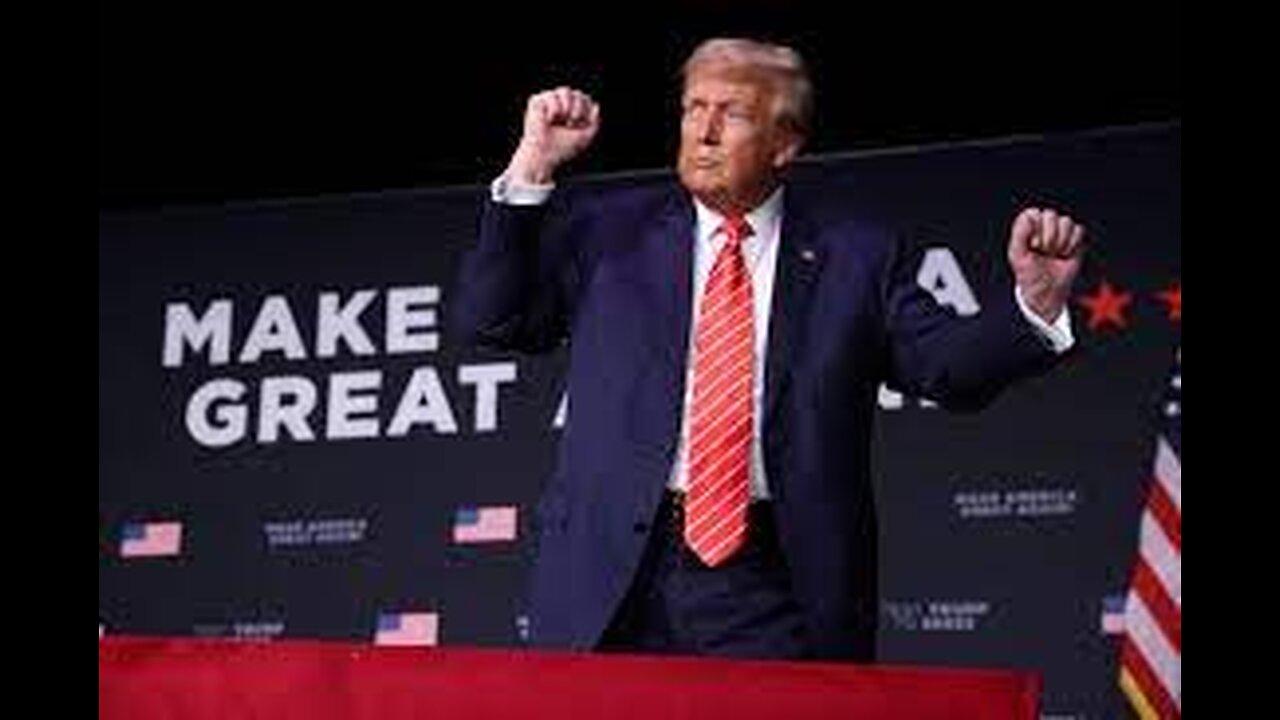The Trump-Biden Presidency: A Comparative Study Of Achievements And Failures

Table of Contents
Economic Policies: A Tale of Two Approaches
The economic policies of the Trump and Biden presidencies represent fundamentally different approaches to managing the American economy.
Trump's Economic Policies:
Trump's economic platform centered on deregulation and significant tax cuts. The Tax Cuts and Jobs Act of 2017, a cornerstone of his administration, slashed corporate and individual income tax rates. This led to an initial surge in GDP growth, fueled by increased business investment and consumer spending. However, this growth was accompanied by a substantial increase in the national debt. Trump also initiated trade wars, particularly with China, imposing tariffs on billions of dollars worth of imported goods. While proponents argued these measures protected American industries, critics pointed to negative impacts on consumers through higher prices and disruptions to global supply chains.
- Increased GDP growth initially, followed by slower growth. The initial economic boost proved unsustainable, and growth slowed considerably before the COVID-19 pandemic.
- Significant increase in the national debt. The tax cuts, combined with increased government spending, led to a dramatic expansion of the national debt.
- Trade disputes impacting various sectors. Tariffs imposed during the trade wars negatively affected various sectors of the American economy, leading to job losses in some industries.
Biden's Economic Policies:
Biden's economic agenda contrasts sharply with Trump's. He prioritized government investment in infrastructure and social programs, aiming to stimulate economic growth and address income inequality. The American Rescue Plan, a massive COVID-19 relief package, provided direct payments to individuals and businesses, while the Bipartisan Infrastructure Law focuses on upgrading roads, bridges, and other critical infrastructure. Biden also emphasizes combating climate change through investments in renewable energy and green technology.
- Increased government spending aimed at economic stimulus. This approach aims to boost demand and create jobs through public works projects and social safety net expansions.
- Efforts to expand social programs and reduce poverty. Biden's administration has focused on expanding access to affordable healthcare, childcare, and other social services.
- Investment in renewable energy and infrastructure modernization. A key aspect of Biden's plan is the transition to a cleaner energy economy and modernization of the nation’s infrastructure.
Foreign Policy: Divergent Global Strategies
The Trump and Biden presidencies also showcase distinct approaches to foreign policy.
Trump's Foreign Policy:
Trump's "America First" doctrine prioritized unilateral action and a retreat from multilateral agreements. His administration withdrew from the Paris Agreement on climate change and the Iran nuclear deal, significantly altering the US's role in global affairs. Relationships with traditional allies were often strained, while engagement with some authoritarian regimes increased. This approach was criticized for undermining international cooperation and weakening alliances.
- Isolationist tendencies and renegotiation of trade deals. The administration renegotiated existing trade deals and sought to prioritize bilateral agreements over multilateral ones.
- Strained relationships with traditional allies. The "America First" approach led to friction with key allies within NATO and other international organizations.
- Increased engagement with some authoritarian regimes. The administration pursued closer ties with some authoritarian governments, despite concerns about human rights.
Biden's Foreign Policy:
Biden's foreign policy emphasizes a return to multilateralism and a strengthening of alliances. His administration rejoined the Paris Agreement and has sought to re-engage with international institutions. A core element of his approach is collaborative diplomacy and addressing global challenges such as climate change, pandemics, and human rights abuses through international cooperation.
- Rejoining international agreements and strengthening alliances. Biden's administration has worked to restore the US's standing within the international community.
- Emphasis on cooperation with international partners. Multilateralism and collaboration are central to Biden’s foreign policy strategy.
- Focus on human rights and democracy promotion. Promoting democracy and human rights is a significant element of Biden's foreign policy agenda.
Domestic Agenda: Contrasting Priorities
The domestic agendas of the two presidencies reflect differing priorities.
Trump's Domestic Agenda:
Trump's domestic agenda focused heavily on immigration, judicial appointments, and law and order. His administration pursued stricter immigration policies, including efforts to build a wall on the US-Mexico border and implement stricter immigration enforcement. He also appointed numerous conservative judges to federal courts, significantly shifting the ideological balance of the judiciary.
- Controversial immigration policies sparking debate. Trump's immigration policies generated considerable public controversy and legal challenges.
- Shift in the ideological balance of the Supreme Court. The appointment of conservative justices reshaped the composition and jurisprudence of the Supreme Court.
- Emphasis on law and order. The administration prioritized a tough-on-crime approach, emphasizing law enforcement and increased penalties for certain crimes.
Biden's Domestic Agenda:
Biden's domestic policy prioritizes social justice, racial equality, healthcare access, and climate change mitigation. His administration has implemented initiatives to address systemic racism, expand access to affordable healthcare, and invest in clean energy technologies. He's also focused on criminal justice reform and efforts to reduce gun violence.
- Focus on social justice initiatives and criminal justice reform. Biden has sought to address historical inequalities and reform the criminal justice system.
- Efforts to expand access to affordable healthcare. The administration has worked to expand access to healthcare, particularly through the Affordable Care Act.
- Investment in clean energy and climate mitigation. Combating climate change and transitioning to renewable energy sources is a key priority.
Crisis Management: Navigating Unprecedented Challenges
Both presidencies faced significant crises, testing their leadership and policy responses.
Trump's Response to Crises:
Trump's handling of the COVID-19 pandemic was widely criticized, with accusations of downplaying the virus's severity and a slow initial response. His administration's approach to social and political unrest also faced considerable criticism.
- Controversial handling of the COVID-19 pandemic, leading to high infection and death rates. The administration's response was marked by inconsistent messaging and a lack of coordinated national strategy.
- Responses to protests and civil unrest sparking widespread criticism. The administration's responses to various protests and civil disturbances generated significant controversy.
Biden's Response to Crises:
Biden's administration inherited the ongoing COVID-19 pandemic and focused on accelerating vaccine distribution and providing economic relief. His approach to addressing economic recovery and social challenges sought to build on and improve upon the previous administration's efforts.
- Increased investment in vaccine distribution and public health infrastructure. The administration prioritized vaccine rollout and strengthening public health systems.
- Efforts to stimulate economic growth and address social inequalities. Biden's administration aimed to address the economic fallout from the pandemic and persistent social inequalities.
Conclusion:
This comparative analysis of the Trump and Biden presidencies reveals stark contrasts in their approaches to governing, both domestically and internationally. While Trump prioritized deregulation, protectionism, and a more isolationist foreign policy, Biden has focused on government investment, multilateralism, and addressing social inequalities. Evaluating the successes and failures of each administration requires a nuanced understanding of their policy choices and their impact on various sectors of American life and the global landscape. Further research and analysis of the long-term consequences of their policies are essential for a complete understanding of the Trump-Biden Presidency. To delve deeper into specific policy areas, explore further resources on the Trump-Biden presidency.

Featured Posts
-
 Kaysima I Evdomadiaia Anafora Timon Gia Tin Kypro
May 15, 2025
Kaysima I Evdomadiaia Anafora Timon Gia Tin Kypro
May 15, 2025 -
 Reno Boxings Comeback A Heavyweight Champions Plan
May 15, 2025
Reno Boxings Comeback A Heavyweight Champions Plan
May 15, 2025 -
 Nhl 25s Arcade Mode Release Date Gameplay Details And More
May 15, 2025
Nhl 25s Arcade Mode Release Date Gameplay Details And More
May 15, 2025 -
 Auction Results Kid Cudis Jewelry And Sneakers Fetch Impressive Sums
May 15, 2025
Auction Results Kid Cudis Jewelry And Sneakers Fetch Impressive Sums
May 15, 2025 -
 Npo Vertrouwen College Van Omroepen Werkzaam Aan Herstel
May 15, 2025
Npo Vertrouwen College Van Omroepen Werkzaam Aan Herstel
May 15, 2025
